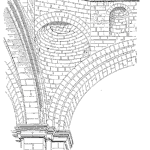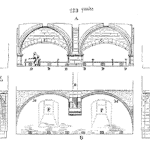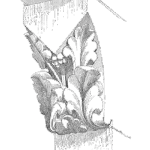
This article explains the operation of peristaltic (hose) pumps and gives twelve points to be aware of when using them. [Read more…]
Your Reliability Engineering Professional Development Site
Author of Plant Maintenance, Maintenance Management, and Life Cycle Asset Management.
This author's archive lists contributions of articles and episodes.

This article explains the operation of peristaltic (hose) pumps and gives twelve points to be aware of when using them. [Read more…]
by Mike Sondalini Leave a Comment

This article presents a basic explanation of electric motor construction and operation along with eleven problems that can be encountered with their use.
Most electric motors in industrial equipment are three phase alternating current induction motors. Induction is the creation of an electric current across a gap. Two types of induction motors are commonly used: squirrel-cage and wound-rotor. The names come from the way they are built. [Read more…]

In this article on pulse jet bag house dust collectors we cover twelve factors spanning their design and operation.
A bag house dust collector is used to separate dust from a dust-contaminated gas stream. The gas is filtered through bags made of fabric. The fabric traps and filters out the dust while the cleaned gas passes through. The fabric consists of either woven or intertwined (felted) fibres. The bag fibre is selected for its ability to give a long working life within the internal environment of the dust collector. [Read more…]
by Mike Sondalini Leave a Comment

If you are ever in the fortunate position of developing a maintenance system from the beginning, the list below will help you focus your efforts. Maintenance systems in small business, develop by default and without much forethought. This list puts together, in one place, the important components of a workable maintenance system. [Read more…]
by Mike Sondalini Leave a Comment

Changing out dust bags in reverse pulse dust collectors. The dust bags in pulse jet dust collectors require replacement if damaged and leaking or if blinded by the product. This work procedure indicates the process and methods to use to change-out and replace dust bags and cages in a dust collector. Keywords: tube plate, bag collar, air manifold, air plenum.

This quarter we would talk a little about bronzes, their properties and applications. One of our readers said they occasionally hear people refer to a brass bush when in fact they want a bronze bush and could we write something on this. Lets also look at the range of materials one may come across:

This article covers the conversion of the shaft bearings on a basket centrifuge from oil-bath to grease lubrication. [Read more…]
by Mike Sondalini Leave a Comment

The temperature of a process is an important measure to know as it indicates whether or not the process is in control.
The selection of the temperature sensing method depends on
by Mike Sondalini Leave a Comment

The watch keeper of old guarded their people and possessions. They were found walking about looking, listening, and watching for changes that signaled danger. Their job was to look for hazards and quickly raise the alarm before all of them were invaded and killed or captured into slavery. With sufficient warning the home group could rally to the defence and counter-attack the enemy.
Times haven’t changed that much. Instead of being invaded by the enemy we now get consumed by plant and equipment problems. If only there was an effective way to spot problems coming our way and mount a counter-attack before being overrun. [Read more…]
by Mike Sondalini Leave a Comment

Spherical roller bearings (SRB) are popular because they can take very heavy loads and are self aligning. Their design allows them to take combined loads in both the radial and axial direction acting together. Each roller is loosely retained in place within a cage that goes full circle between the raceways. Figure 1 shows a simplified drawing of a spherical roller bearing on a shaft under deflection. [Read more…]

Equipment reliability studies show that the likelihood of failure increases the more often machinery is disturbed. The chance of something being done wrong rises every time an item of plant is worked on. Nothing may go wrong the first time or the second time but with each additional disruption there is an increasing possibility that an error will be made.
Simple, fast and uncomplicated access to individual items of plant and equipment means higher plant availability and longer time between failures. [Read more…]

A fluid is either a liquid or a gas. In industry, they are piped from storage to the point of use. Correct design and installation of the piping system minimises pressure loss and improves the behaviour of equipment and processes.
This article briefly explains what happens to fluids flowing through pipes. [Read more…]
by Mike Sondalini Leave a Comment

Capacitance level probes consist of a long rod or cable that protrude into a vessel and its contents. The instrument sets up an electric field between the probe and the tank wall using the contents of the tank as a dielectric (a nonconductor that allows an electric field to exist within itself). If the tank is non-metal, such as plastic or brick lined, two parallel rods are mounted in the level probe or a metal strip can be run on the outside of the tank. The electric field is set-up between the two probes or the probe and the metal strip. Figure 1 shows a simplified layout for a capacitance level probe. [Read more…]
by Mike Sondalini Leave a Comment

A work order full of code numbers confuses people. When work order type (breakdown, corrective, modification, etc) is described as Work Order Type ‘04’ you can guarantee that no one knows what ‘04’ is without looking it up on a list.
If a Trade Type is a ‘02’ and it means a fitter, you can be sure that a lot of work order requests from operators will be wrong and they will take the planner’s time to correct. Even more confusing is when the Work Order Type and the Trade Type are both an ‘04’! [Read more…]

What readers will learn from this article.